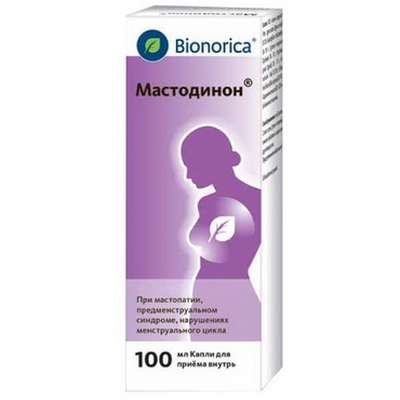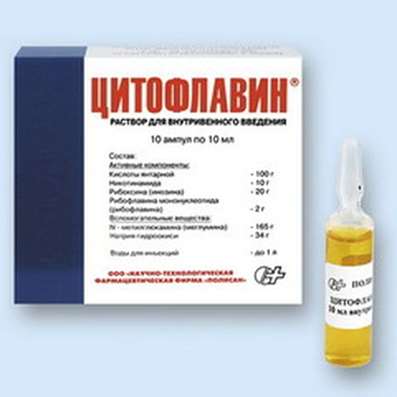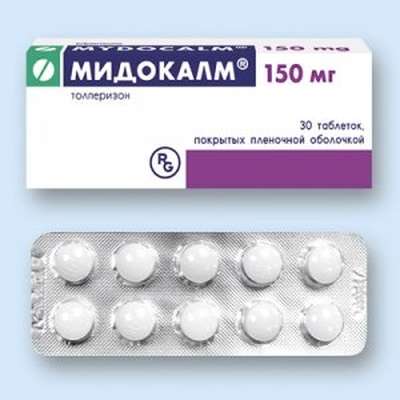FAQ: Preventive Cardiology
26 Oct 2016
7 facts about the prevention of cardiovascular disease

Preventive cardiology - a new approach to cardiology practice, which focuses primarily on the prevention of acute, life-threatening disorders of the cardiovascular system - those that carry today in developed countries, the greatest number of lives. Speaking of Cardiology, we mean here cardiovascular diseases in general. Broadly, they comprise not only the myocardial infarction, and stroke, and heart failure and fatal cardiac arrhythmias.
The importance of prevention of these conditions is due primarily to the fact that they are extremely difficult to treat, as they have already developed. When we approached the patient, which is already in urgency (acute) condition, to do something, as a rule, very difficult. The health system spends a lot of resources of various kinds on to help in this situation. Therefore, after the medical science, new methods of prevention, it became clear that a well-known principle of "prevention is easier than cure" is especially true for heart disease have been developed.
- 1.
Throughout human history, replaced the main causes of death in humans. Initially, people were dying due to lack of food, because of wars and violence in later periods of thousands of lives have carried out an epidemic of infectious diseases.
If you look at a statistics of death from disease in general, you will see that he almost walked straight down since the beginning of the twentieth century. Ironically, the death rate declined sharply in the 20s. This was due not to the invention of some drugs, and with the introduction of the principles of hygiene, so that people are much less likely to die from infections. Even a reduction in mortality with the beginning of the era of antibiotics was not as significant.
Over the past 40 years, there was a serious paradigm shift in the perception of health, life and death. Currently, risk factors for death are smoking, poor diet (primarily hypercaloric fatty foods), alcohol, stress, lack of physical activity. The one saving resources phenotype, can survive in times of shortage, played a cruel joke with the people in the conditions of the food being. Our "selfish" brain, doubts the availability of resources tomorrow, requires the consumption of fatty foods, even when it is not needed. This behavior is "calming" of us, but it jeopardizes the vessels and the liver. Preventive cardiology gives the keys to the effective management of such a completely new profile of risk factors, placing the main purpose of the prevention of cardiovascular events.
- 2.
Preventive Cardiology - is a complex approach that covers all levels of prevention, starting with the genetic risk factors and ending with a change in diet and behavior patterns. When choosing an impact strategy takes into account and modifiable risk factors (such as smoking and high blood pressure), and non-modifiable (eg, age and male gender).
The first achievement of preventive cardiology can be attributed to the middle of the XX century. Then began the decline in mortality from heart disease, are associated with a fact that society has become actively take advantage of new principles for the preservation of health of the cardiovascular system.
In practice, there are two ways of implementing methods of preventive cardiology.
The first can be called the Northern European. In cold sandwich table who adored and fatty foods in Finland 70 years cardiovascular mortality was the highest in Europe. Then well take the words of doctors Finns and other northern peoples, roughly speaking, we explained that if they eat less fatty foods, smoke less, drink, become less die from heart disease. An extensive education campaign quickly bore fruit - the Finns managed to dramatically reduce deaths from heart disease and get off at one of the first places in Europe to reduce mortality (the so-called North Karelia Project, North Karelia project).
In preventive Cardiology we often suggest to buy Meldonium, Asparcam and Riboxin for heart protect.
In the second way was chosen by the United States. There, people do not really want to change the habitual way of life, but they oppose the new risk factors drugs breaks the connection between continuing to operate and the risk factors leading to the death of pathological vascular changes. American scientists have calculated that from 1980 to 2000, the death rate from heart disease has decreased about 2 times that in absolute figures corresponds to about 200 thousands of lives saved. But against this background was marked by an increase in mortality due to progression of diabetes and obesity, which is an indirect evidence in favor of the Americans, unlike the Finns, could not resist the craving for fat and high nutrition.
The nations who have failed or can not adapt to the changing profile of risk factors, and to take the concept of preventive cardiology, apparently doomed to extinction.
- 3.
Preventive Cardiology consists of several basic units. First - it is parenting, social basis. This includes the weight of the methods, which are generally prepared society to a more relaxed lifestyle and nutrition. At the second level, preventive cardiology deals with patients who are the same risk factors with high probability show up tomorrow: it is the young men and women who are already minimally expressed in vascular damage caused by the inhalation of tobacco smoke or fats in the composition of smoked sausage slices. Today's society is simply oversaturated risk factors. Most initial atherosclerotic vascular damage observed even at the opening of the coronary vessels of the fetus (for example, if a young pregnant woman is killed in a car accident). It's not quite like what we see in older people, it is a reversible process. However, atherosclerosis is actually lives in us from birth, so, too, need a certain prophylactic benefit in the population of young people: in the first place, it is the prevention of smoking, the formation of an active lifestyle, weight loss.
And the higher the risk of further patient becomes, the more aggressive preventive effect desired. The third level of preventive cardiology includes a set of the most effective measures to prevent the development of heart attack or stroke in those who are already sick or are just on the verge of death. And on the severity of the state of a person can not guess - in some cases carrying the death of unstable atherosclerotic plaques generally does not manifest itself, and can be diagnosed only by very experienced cardiologist.
- 4.
A set of risk factors are constantly changing. As a rule, it expands with age, and there is a definite clustering, for example, a man with obesity and sitting all the time on the couch and drink beer, and smokes, and even gets the stress of scandals and his wife. At this point there is an exceptionally powerful multifactorial pathological effects on the vascular wall. Their walls remodel, thicken and become more rigid, which leads to an increase in blood pressure. At the same time in certain areas of vascular inflammation occurs, there rush fats that form the very atherosclerotic plaque.
A very important role here belongs to factor such as chronic mental stress. Evolutionary our bodies well adapted to acute stress, entailing discharge. Constant chronic stress due to complex and incompletely understood mechanisms greatly reduces the ability of blood vessels to confront the traditional shell damaging factors, potentiating their action repeatedly.
Such people need to attract those who could find them approach doctors, so they passed the lipid profile, periodically measured blood pressure, blood glucose levels, not smoking, and use appropriate techniques of emotional unloading.
If the situation starts to drift, then in the future the risk increases even more, patients develop symptoms of heart disease: first it may be barely noticeable pain behind the sternum ( "if sauna leaf on the skin for a few minutes adhered") that many men tend to ignore.
- 5.
Especially necessary to select a combination of high blood pressure in the vessels with the presence of atherosclerotic plaques in a patient who has not yet had time to develop a heart attack or stroke. This is a situation where "fire" in the vessels (ie thrombosis) may begin at any time. That match, which it inflames, usually serves as acute stress, which can not be predicted. In these patients, justified the use of the most aggressive preventive therapy. Sometimes, it is up to 6 different drugs taken simultaneously, for example, statins, antiplatelet agents, hypoglycemic agent, a beta-blocker, an ACE inhibitor and a calcium channel blocker. To understand when it is time for such measures is necessary to sense the doctor, but there are also cardiac card - table, substituting in that age, gender, cholesterol, blood pressure and other indicators, we can calculate the level of risk. In severe cases, may clarify the situation, new methods of radiological diagnostics.
- 6.
Unfortunately, in a society there is a perception that a few years before the onset of a heart attack in humans must begin to hurt the heart. Unfortunately, many men, it does not hurt until the last moment. When conducting a survey of young men who had suffered a heart attack in the hospital, it is that 2/3 of men do not feel any symptoms related to the violation of the heart, in the previous two months. Doctors recently realized what was happening: the elderly, as a rule, in the vessels are large plaques that cover the flow of blood; their patients "feel" because the heart does not have enough oxygen. Such plaques long "ripen" to break the heart with pain, but also adapted to life in conditions of oxygen starvation. Young people who experience high levels of stress, there are small plaque with a very thin and fragile fibrous cap. Often they are silent, their appearance is not associated with pain in the heart, but can suddenly burst on the background of an imaginary being, just manifesting itself a massive heart attack.
The concept of unstable plaques and management of risk factors in a patient with probable presence of plaque - it is one of the key issues of modern preventive cardiology.
- 7.
Suffice it to the important question of whether we're aware of the risk factors that lead to the development of heart disease, and whether all the principles of lifestyle modification and prevention of acute life threatening conditions studied. Basic definitely it is known: maintaining the blood pressure at a level not higher than 130 and 80 mm Hg .; prevention of obesity; control lipid and glucose levels; reduction in salt intake, fatty foods and alcohol with an increase in the diet of vegetables, fruits, whole grain cereals, nuts, and fish; a complete cessation of smoking; increased physical activity and, of course, methods of achieving mental well-being.
Active study of risk factors for cardiovascular disease continues at the present time. And in the near future, we will learn a lot about them.

 Cart
Cart





